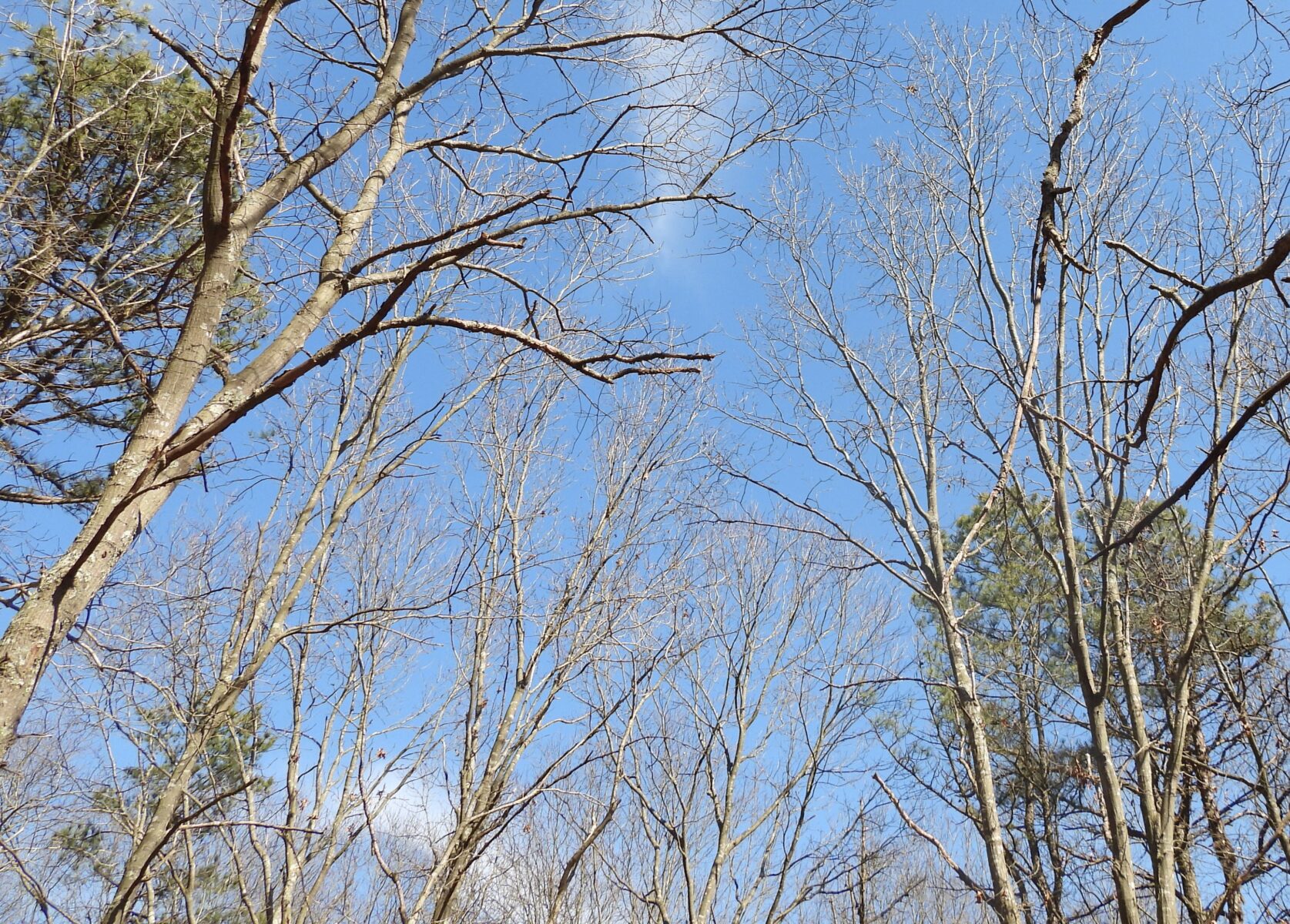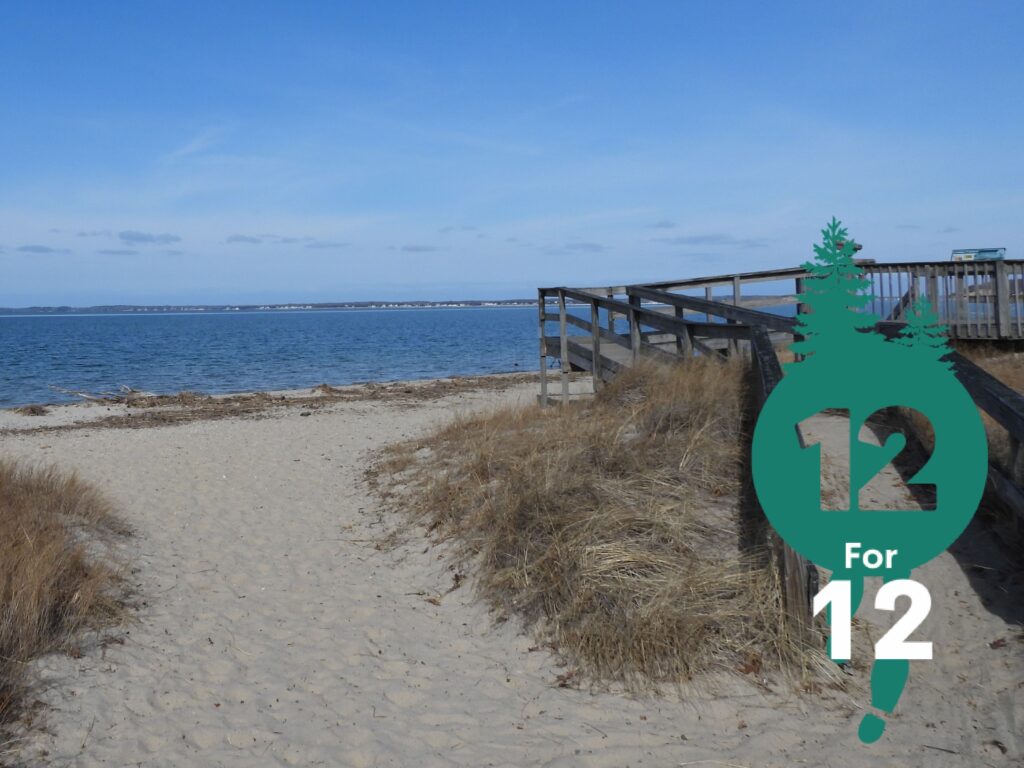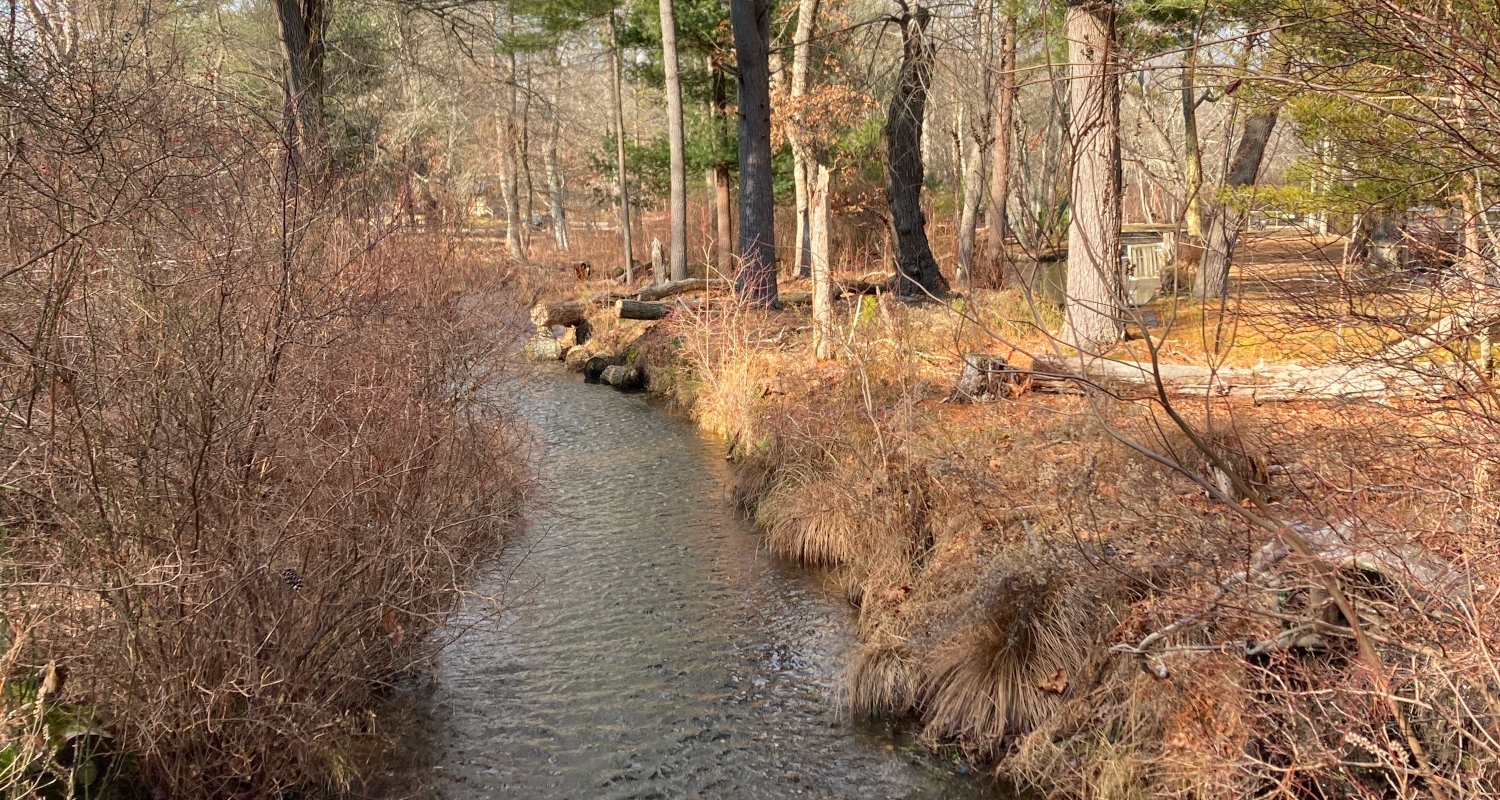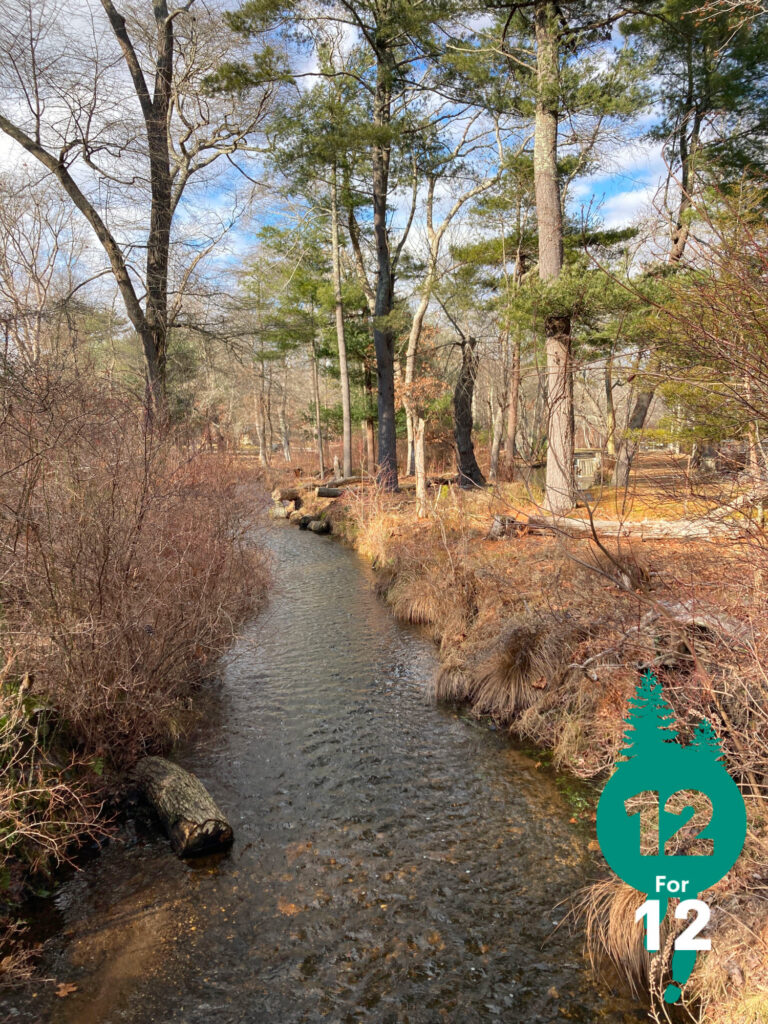April 12 for 12: Caleb Smith State Park Preserve

By Travis Cutter, Long Island Pine Barrens Society
March 12 for 12: Fish Thicket Preserve

12 for 12! This month, we’re sticking closer to home and heading to Fish Thicket Preserve, a Town of Brookhaven park located just off Woodside Avenue. This preserve features dense forests and winding, interlocking trails, yet is small enough to go through in half an hour.
The first thing that needs to be stressed about this park is how difficult it is to find it! If you’re driving west on Woodside Avenue, you’ll see a sign identifying the park on the left side of the road, but if you’re driving east, that same signpost will not identify the park! Since there is not a parking lot for this preserve, you’ll simply have to park on the shoulder of Woodside in the area around the sign. Fortunately, the shoulder on Woodside is spacious, and there’s a bike lane separating it from the traffic. The next challenge, then, is figuring out where the trails start! When you’re facing the sign, walk forward, and you should see a dirt path descending into the woods. It’s very easily hidden when you’re just driving by, so keep your eyes peeled!
Once you’ve found your way into the preserve, you’ll find yourself going up and down fairly steep grades. There’s a bench right at the start of the trail, and a picnic table a bit further in, but after that there aren’t any rest stops until you’ve completed your loop around the prserve. Couple that with the erratic changes in elevation, and Fish Thicket proves to be a more challenging hike than last month’s 12 for 12. It’s also worth noting that there are no restrooms here, so take your potty break beforehand!
The trails themselves are easily apparent. At this time of year, many of them are covered in dead leaves and pine needles, but I never found myself wondering if I’d accidentally gone off the trail at any point. There are many different intersections, but you’ll know when it’s time to turn around once you begin nearing the residential areas that form the border of the preserve opposite Woodside Avenue.
On my walk, I saw a nice variety of animals that might be expected in the forest. From bees, to butterflies, to woodpeckers, to songbirds, there’s a nice variety in what inhabits the preserve, even if the preserve itself is fairly uniform in terms of its habitat.
If you’re looking for a quiet walk, this preserve will mostly serve your needs. At the start of your walk, the screeching of the cars on Woodside Avenue will be exceedingly obnoxious, but after five or so minutes of walking, the noise pollution faded away for me. The preserve was also mostly bereft of other people. I saw one other person on my walk, and it’s worth noting that they were riding their bike through the preserve with no difficulties whatsoever, so if you’ve got a bike that can handle the terrain, then this may be an ideal place to visit. Since it’s been asked before, it’s worth noting that this would not be the best park to bring strollers or scooters.
Fish Thicket Preserve is an ideal park if you want a short bout of exercise. Its inconsistent terrain means it’s a strenuous hike at points, but that might be exactly what you’re looking for. This is one of the most obscure parks we’ve covered on 12 for 12 and will likely be the most obscure by the time the year’s through. But, the term “hidden gem” exists for a reason, and I think that for many, this park would certainly qualify.
By Travis Cutter, Long Island Pine Barrens Society
February 2024: Elizabeth A. Morton National Wildlife Refuge

12 for 12! This month, we’ve gone way out to the East End to visit one of Long Island’s several National Wildlife Refuges – the Elizabeth A. Morton National Wildlife Refuge!

This refuge features a nice array of habitats, from hardwood forests, to grasslands, to the Peconic Bay itself! It’s a much shorter trail than last month’s and is easily completed in under an hour if you don’t take your time. But why wouldn’t you? This is a beautiful place that is easy to get lost in. Metaphorically, that is. Literally, you should stay on the trails.
Now, the first thing to note about some of the national wildlife refuges is that you need to pay to access them. If you go three or four times a year, an annual pass will probably be worthwhile. This is especially true considering that Long Island is home to eight National Wildlife Refuges, including Elizabeth A., Wertheim, and Target Rock. If you’re truly opposed to buying the pass, there are also some free days, with the next one scheduled for Juneteenth (June 19).
Once you’ve made it all the way out to Noyack, you’ll find yourself in a fairly small parking lot that can fill up quite quickly in the summer months. Even now, on a cold winter morning, there were half a dozen cars parked when I arrived. Elizabeth A. Morton is fortunately equipped with proper restroom facilities. Those of you, like myself, who’ve visited the park for many years will know that that wasn’t always the case.
From the restrooms, it’s pretty much a straight shot from the parking lot to the beach. The dirt path is nice and wide, which is immeasurably important if you’re terrified of ticks. From the bathrooms to the beach, the trail is about a mile, and there are numerous benches along the main trail if you need to rest. On the way, you’ll see all manner of birds, from woodpeckers, to chickadees, to tufted titmice and more. And, for mammal lovers, the refuge is frequented by squirrels, deer, and chipmunks.
While the trail is perfectly optimized for the tick-averse among us, it doesn’t rank among the easiest walks on Long Island, though neither is it the hardest. The dirt path is uneven underfoot, and gnarled tree roots are always threatening to trip you, so watch your step! Often, the trail will rise and fall, though once you near the beach, it flattens out, and the walk becomes much easier.
The first thing you’ll see when you make it to the beach is an observation deck where you can sit down, relax, and look all around at Peconic Bay. During the winter, the Bay is frequented by various waterfowl, though on this visit I only saw a gull and a loon. If you can handle the blistering bay winds, then you might be inclined to walk the whole length of the beach. During the summer, most of this area is closed off to protect the area’s Piping Plover population, so there’s something new to explore even if you’ve already visited this park in the warmer months.
At the start of your hike and about halfway through, you’ll notice secondary trails that lead off into different parts of the woods. This secondary loop is about half a mile long and will take you nearer than ever to the refuge’s grasslands, as well as to a lovely little pond tucked away in the heart of the woods. The loop is a more difficult hike than the main trail, with a steep change in elevation at the entrance closer to the beach, and fewer benches. However, there’s a second observation deck at the pond, and a few recently repaired boardwalks over some of the most treacherous ground.
In short, if you’re an East End resident, there’s little reason for you not to visit one of the area’s most beautiful locations. And if you’re not from the East End, but have made the trip out there, then be sure to stop by!
By Travis Cutter, Long Island Pine Barrens Society
January 2024: Connetquot River State Park Preserve



